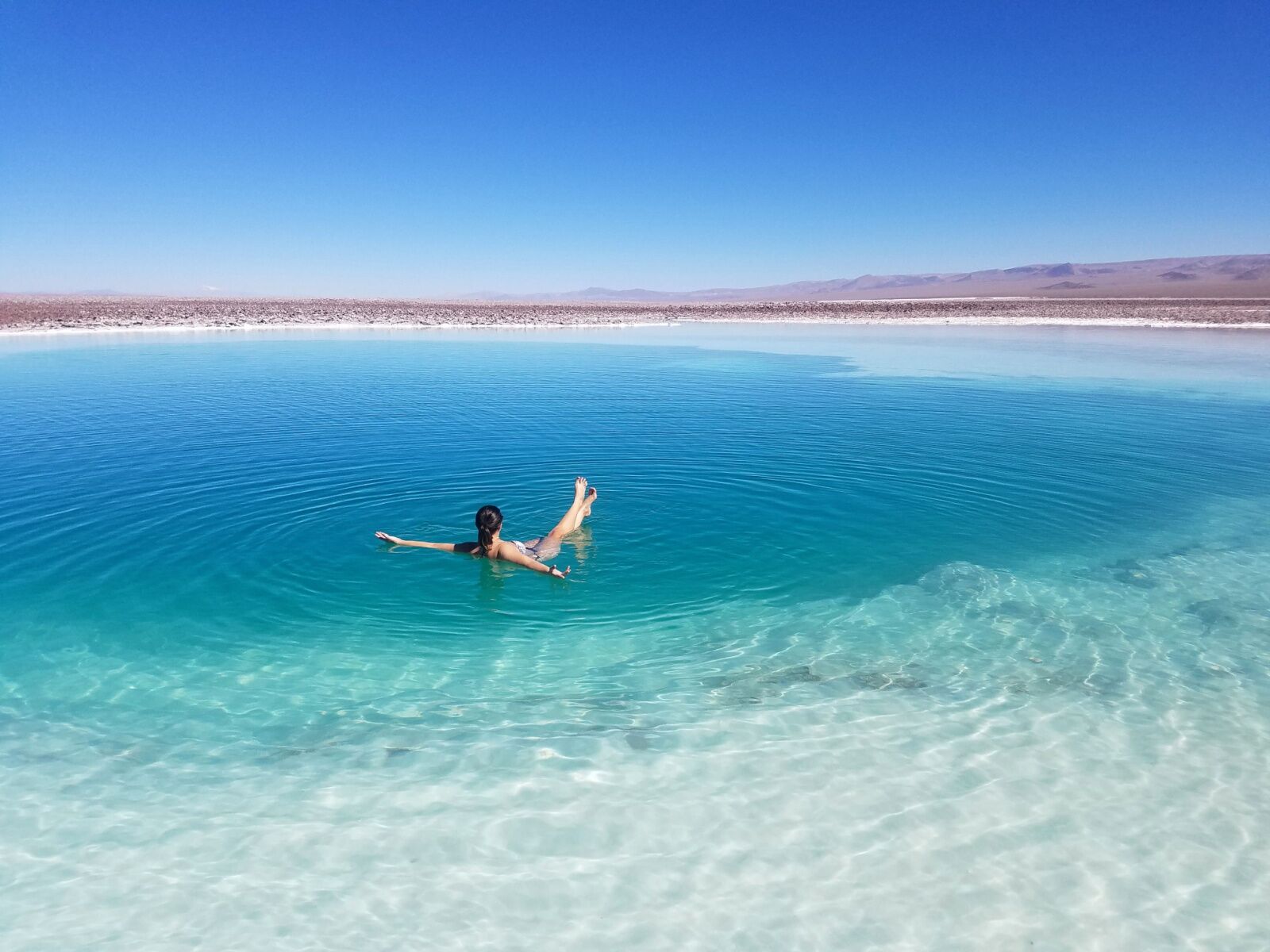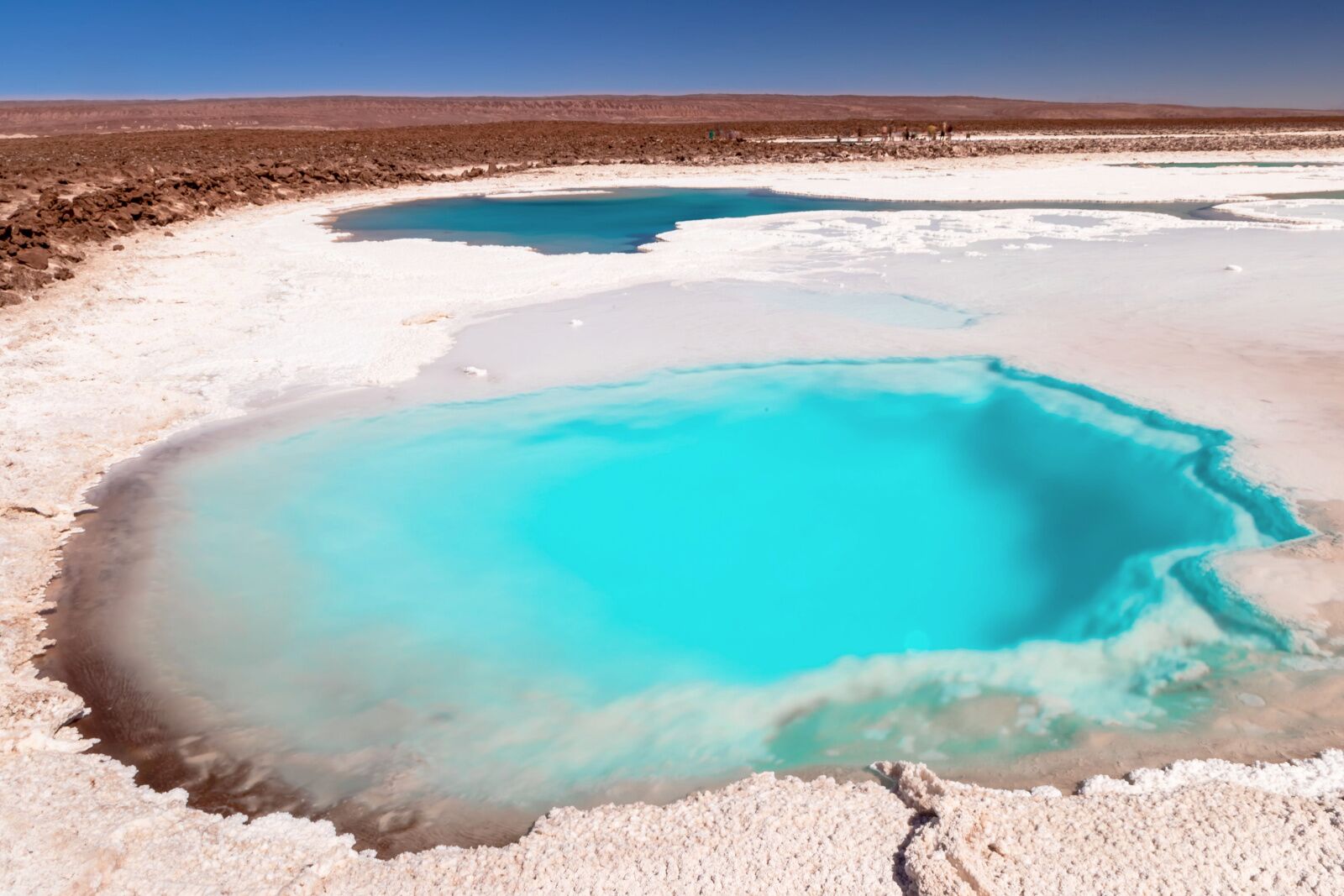The Atacama Desert is a desert located in Chile. It is one of the driest places on Earth, with some areas receiving less than one millimeter of rainfall per year. Despite its arid conditions, the Atacama Desert is home to a variety of flora and fauna, including cacti, lichens, and several species of birds. The Atacama Desert is a popular tourist destination due to its unique landscapes and abundance of natural beauty.

Floating in Chile's Atacama Desert Pools Is an Otherworldly Experience
While it’s very much a desert, one of the biggest tourist draws is something you may not expect to find in your average desert: beautiful natural pools dotted across the landscape.
@visit Floating in a dream-like state in the Atacama Desert of Chile. 🇨🇱 Did you know this region has the largest supply of sodium nitrite in the world?! Studies by NASA have also concluded that this is the driest desert in the world. Evidence shows that the Atacama Desert may not have had any significant rainfall from 1570 all the way until 1971. Pretty wild 🤯 Ig: @jess.wandering #chile ♬ Paradise – Ikson
What are salt pools?

Photo: JeSleiter/Shutterstock
Salt pools are pools of water that have a high concentration of salt. The salt makes the water denser, which is why objects that normally wouldn’t float well — like people — can easily float on the surface. The more salt there is, the easier it’ll be to float. Swimming and floating are the most popular activities in the natural salt pools of Chile, though salt pools around the world are commonly part of health and wellness treatments.
Some people think the high concentration of minerals in salt water has therapeutic effects on their skin and respiratory system, though the science is still a little out on that one. Regardless, they’re fun to float in.

Photo: SierraLemon/Shutterstock
The pools form as a result of evaporation in dry areas, like the Atacama Desert. As the water in the desert evaporates, it leaves behind a higher concentration of salt, causing the natural formation of saltwater pools with significantly higher salt concentrations than seawater.
One of the most eye-catching animals in the area is the greater flamingo, usually seen perched on lagoons, standing out against the bright blue water. While it may seem like an unlikely place to find these birds, they can survive long periods of harsh weather conditions while searching for food in the natural salt pools and lagoons in the area.
Where is the Atacama Desert?
Chile’s natural salt pools are near San Pedro de Atacama in the Atacama Desert. However, it’ll still be a long drive from town to reach the natural salt pools as the Atacama Desert covers more than 40,000 square miles in central Chile. The closest airport is the Calama Airport, which is about a two-hour flight from Santiago.
It’s a bit far from Chile’s other major outdoor paradise — Patagonia — but if you have about two months to take off, you can link the Atacama Desert with the southern national parks, creating what may be the most amazing road trip in the world.
The best pools to visit in the area

Photo: Alexandree/Shutterstock
- Laguna Piedra: This is a popular saltwater pool only about 30 minutes from San Pedro. The water is cold but super buoyant, and there are shower facilities in the area to get the salt off your skin after your float sesh. The entry fee is around 15,000 Chilean Pesos (around $18 US), and it tends to get busy as it’s a popular stop on area tours of the desert’s natural salt pools.
- Lagunas Escondidas de Baltinache: A few of the area natural salt pools have similar names, so make sure you’re headed to the correct one — it’s about an hour west of San Pedro by car. The entry fee is about $6 US and it’s very, very salty, making it one of the easiest places to float in the entire desert. Be sure to shower afterward to get the salt off your skin.
- The Puritama Hot Springs: If you want to soak in warmer waters, visit the Puritama Hot Springs. They’re not nearly as salty as the natural salt pools so you may not float, but it’s much more developed and offers a lovely sunset soak option you can book online for about $20 US.
- The Chaxa Lagoon: One of the most famous pools in the Atacama Desert is Chaxa Lagoon. Located near San Pedro de Atacama, this lagoon usually offers the chance to observe local wildlife, including flamingos. Note that this isn’t a swimming lagoon, but it’s a great spot for photography. It’s about a two-hour drive from San Pedro.
Natural salt pool tours
If you’d rather not rent a car and drive yourself, you’ll find plenty of companies offering tours of the various natural salt pools near San Pedro, ranging from private and all-day photo tours of the pools to affordable half-day group tours to just one or two pools. You can visit year-round, though it may be more pleasant to float in the colder salt pools in the summer (December through March in Chile).